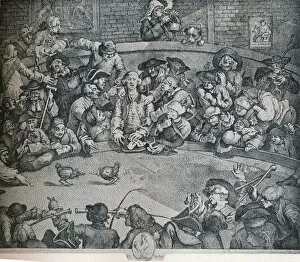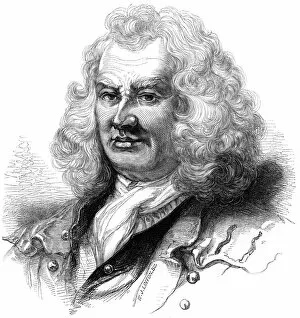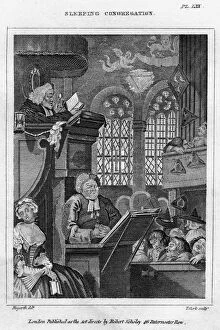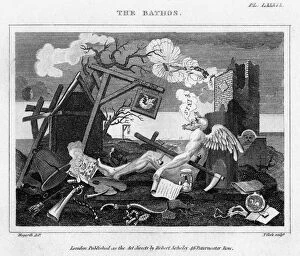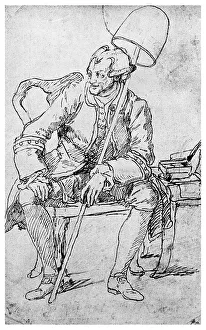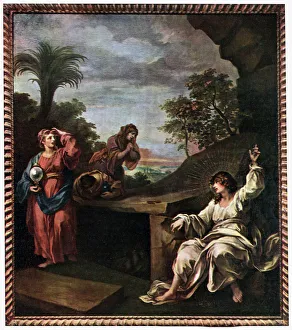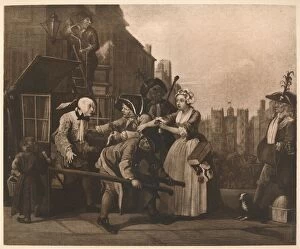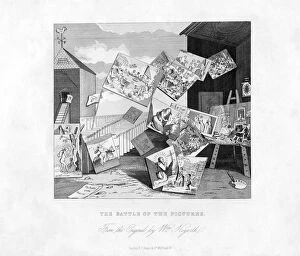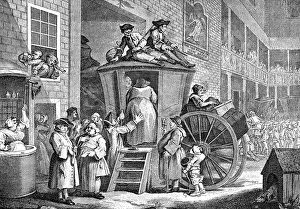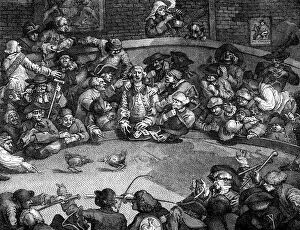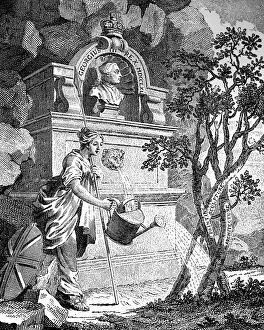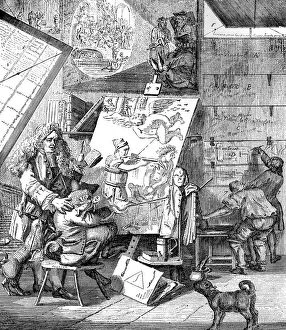William Hogarth Collection (page 30)
William Hogarth (1697-1764) was an English painter, printmaker, and satirist who is considered one of the most influential artists of the 18th century
2,379 items
All Professionally Made to Order for Quick Shipping
-
William Hogarth Collection
William Hogarth (1697-1764) was an English painter, printmaker, and satirist who is considered one of the most influential artists of the 18th century. He is best known for his series of moralizing paintings and prints such as A Rake's Progress, Marriage à la Mode, and The Four Times of the Day. His works often depicted scenes from everyday life in a humorous manner that was intended to critique contemporary social issues. He also wrote several books on aesthetics which were highly influential in the development of British art theory. Hogarth's work has had a lasting impact on British culture and he is widely regarded as one of Britain's greatest artists.
+
Our beautiful pictures are available as Framed Prints, Photos, Wall Art and Photo Gifts
The William Hogarth collection from Media Storehouse offers a wide range of wall art and framed prints featuring the works of one of Britain's most celebrated artists. William Hogarth was an 18th-century painter, engraver, and satirist who is best known for his humorous and often biting social commentary on life in Georgian England. Our collection includes some of Hogarth's most famous works such as "Gin Lane" and "Beer Street," which depict the negative effects of alcohol consumption on society. Other pieces in our collection showcase Hogarth's skillful use of satire to comment on politics, morality, and everyday life. Media Storehouse offers high-quality reproductions that capture the intricate details and vibrant colors found in Hogarth's original works. The prints are available in a variety of sizes to suit any space or decor style. Whether you're a fan of classic art or simply appreciate fine craftsmanship, the William Hogarth collection is sure to impress.
+
What are William Hogarth (Artists Arts) art prints?
William Hogarth was an English painter, engraver and satirist who lived during the 18th century. His art prints are known for their social commentary and often depict scenes of everyday life in London at the time. Hogarth's works were highly influential in shaping British visual culture and his legacy can still be seen today. We offer a range of William Hogarth art prints that capture the essence of his unique style. These prints are perfect for those looking to add a touch of history and sophistication to their home or office decor. From iconic pieces such as "Gin Lane" to lesser-known works like "The Distrest Poet", there is something for every taste. Each print is produced using high-quality materials to ensure that it captures all the detail and nuance present in the original artwork. Whether you're a fan of classic art or simply appreciate beautiful imagery, William Hogarth's art prints are sure to impress.
+
What William Hogarth (Artists Arts) art prints can I buy from Media Storehouse?
We offer a wide range of William Hogarth art prints that you can purchase. Some of the popular prints available include "The Rake's Progress," which is a series of eight paintings depicting the life and downfall of Tom Rakewell, as well as "Gin Lane" and "Beer Street," two engravings that were part of a campaign against excessive drinking in 18th-century England. Other notable works by Hogarth available at Media Storehouse include "Marriage A-la-Mode," another series of paintings exploring the theme of marriage, and "The Four Times of Day," four scenes representing different times during the day. Additionally, there are several portraits by Hogarth featuring prominent figures from his time, such as David Garrick and Captain Thomas Coram. With so many options to choose from, you're sure to find a William Hogarth print that suits your taste and style at Media Storehouse.
+
How do I buy William Hogarth (Artists Arts) art prints?
To purchase William Hogarth art prints from Media Storehouse, you can browse our collection online and select the print(s) you would like to buy. Once you have made your selection, add it to your cart and proceed to checkout. At this point, you will be prompted to enter your shipping and payment information. We offer a range of sizes for each print, so make sure to choose the size that best suits your needs. You may also want to consider framing options if you plan on displaying the print in your home or office. When purchasing art prints from Media Storehouse, it is important to note that they are intended for personal use only and cannot be used commercially without permission. Additionally, acrylic prints are not available through this retailer. Buying William Hogarth art prints from Media Storehouse is a simple process that allows you to bring beautiful artwork into your home or workspace with ease.
+
How much do How much do William Hogarth (Artists Arts) art prints cost from Media Storehouse? art prints cost?
We offer a wide range of William Hogarth art prints for purchase. Our collection includes some of his most famous works, such as "Gin Lane" and "Marriage à-la-mode." The cost of these prints varies depending on the size and type of print you choose. We offer both framed and unframed options in various sizes to suit your needs. Our William Hogarth art prints are printed using high-quality materials to ensure that they look stunning on any wall. Whether you're looking to add some classic artwork to your home or office, or you're a collector looking for rare pieces, our selection has something for everyone. We take pride in offering affordable prices without compromising on quality. You can trust that when you purchase a William Hogarth art print from Media Storehouse, you'll receive a beautiful piece that will last for years to come.
+
How will my William Hogarth (Artists Arts) art prints be delivered to me?
We take great care in delivering your William Hogarth art prints to you. We use high-quality packaging materials to ensure that your artwork arrives in pristine condition. Depending on the size of the print, it will either be delivered flat or rolled up in a sturdy tube. For smaller sized prints, we use protective cardboard envelopes with additional padding to prevent any damage during transit. Larger prints are carefully rolled and placed inside a durable tube for added protection. We work with trusted courier services who provide reliable and efficient delivery options worldwide. Once your order has been dispatched, you will receive an email notification with tracking information so you can keep track of its progress. We understand how important it is for our customers to receive their orders promptly and safely. That's why we strive to deliver all orders as quickly as possible while ensuring they arrive in perfect condition every time.










